Pathological conditions, which, in fact, are not an independent disease, but at the same time violate the patient's habitual lifestyle, are quite common. An example of such a condition is, for example, myoclonus, when it often brings the legs together.
This condition is characterized by involuntary contraction or overstrain of one (several) muscle groups. It is especially unpleasant when cramps suddenly appear at night, which requires mandatory medical advice and diagnosis, as sometimes leg cramps can be an indicator of some serious illness.
10 most common causes of seizures
The causes of seizures are quite diverse, but the etiology of the disease has not been studied enough.
Most often, provocateurs of a pathological condition are:
1. Physical overwork
The calf muscles are overstressed during long walks, long distance running and physical activity, which leads to the development of cramps. Tonic - characterized by a rather long muscle tension, atonic - short-term contraction and relaxation. However, in some diseases (intoxication, disruption of the heart, beriberi, traumatic brain injury, etc.), both types of seizures can occur.
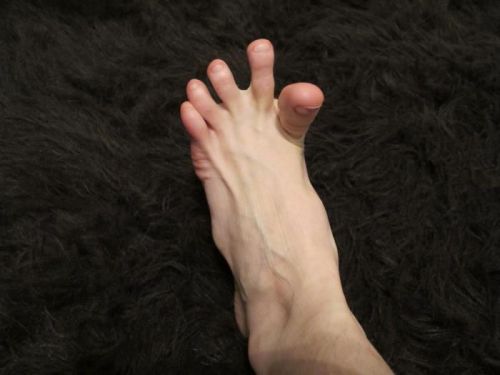
Tonic spasm often occurs after a busy day at work
2. Dehydration
The second most common cause of leg cramps is sudden dehydration, especially during the hot season, during intense sports training or visiting the sauna. In this case, the work of the sweat glands is enhanced, and together with moisture, the body loses a sufficient amount of minerals (magnesium, calcium, sodium) necessary for the body, which provokes muscle spasms.
In addition, a similar condition may occur in patients when the treatment of the disease involves the use of diuretics, for example, in hypertension or cardiovascular insufficiency. The action of these drugs is sometimes accompanied by convulsions, especially at night.
3. Violation of water and electrolyte balance
Another predisposing factor why it cramps the leg is considered to be an imbalance between inhibitory and excitatory signals that enter the calf muscle, as well as an increased contractile muscle reflex. This condition is noted with a decrease in the production of ATP (adenosine triphosphoric acid), which leads to a deterioration in metabolic processes in the muscles of the lower extremities and a decrease in their relaxation. In addition, it can cramp legs with pathological changes in the vessels, for example, with an increase in blood viscosity, etc.
4. Hyperthermia and stress
At temperatures above 38 degrees, cramps may occur in any part of the body, including the legs. This condition is especially common in childhood. In addition, in various stressful situations and nervous breakdowns, there is a sharp release of adrenaline into the blood, which, in turn, helps to reduce the amount of carbon dioxide, followed by cramps in the legs.

Febrile seizures in childhood require immediate medical attention
5. Hyperparathyroidism
The parathyroid glands are located close to the thyroid gland. Their function is to regulate phosphorus-acid metabolism in the patient's body. A characteristic symptom of the disease is muscle spasm of the respiratory muscles, convulsive contractions of the leg muscles, fingers and toes. Simultaneously with spastic contractions, the patient may be disturbed by pain in the abdomen, insomnia and increased irritability.
6. Hypoparathyroidism
With a lack of calcium in the body caused by hypoparathyroidism, repeated cramps in the calf muscles are noted. Seizures may be short-term or prolonged, involving one or more muscles. In addition, the patient has a decrease in immune forces, increased fragility of nails, deterioration in hair structure, etc.
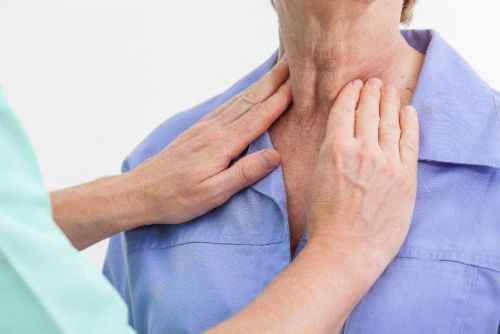
Hypoparathyroidism is extremely rare (about 1.5% of the population), but it can develop in patients of any gender and age
Calcium is especially important for pregnant women, adolescents, and patients on certain diets. The daily requirement for calcium is from 1000 to 1500 mcg per day. A sufficient amount of this trace element is found in dairy products, nuts, soy products, cabbage and parsley. In addition, when the cause of convulsive contraction of the calf muscles is due to hypoparathyroidism, vitamin D is necessary, since it is he who contributes to the maximum absorption of phosphorus and calcium.
7. Polyneuritis
In this disease, there is multiple damage to the nerve endings. The main cause of polyneuritis are viral infections, hypovitaminosis, intoxication, diabetes mellitus, metabolic disorders.

Polyneuritis often develops against the background of alcohol intake and is accompanied by convulsive symptoms.
The disease is accompanied by cramps in the legs, especially at night, paresthesia (a feeling of "crawling") and numbness of the extremities. The patient is concerned about headaches and dizziness, hearing loss, pain in the heart and increased irritability.
8. Varicose disease
Quite often, convulsions occur against the background of varicose veins, in which veins dilate and weaken the venous valves, which leads to stretching of the venous walls and blood stasis. In addition to cramps, the patient is worried about heaviness in the legs, pain, swelling and difficulty walking.

A congestive process in the veins can lead to the development of thrombophlebitis and complete blockage of the vein. Subsequently, this process can lead to thromboembolism and death of the patient.
To improve blood circulation in varicose veins and prevent the development of seizures, it is necessary to use a special elastic bandage, to avoid tight belts and belts. In addition, it is recommended to abandon the habit of cross-legging while sitting, as this position of the body significantly impairs venous blood flow. In case of severe or chronic development of the process, surgical intervention is recommended.
9. Curvature of the ankle joint
Often, the causes of cramps are due to such a joint defect as clubfoot, when the heel area constantly leans inward, provoking a curvature of the ankle. This defect is especially manifested in women wearing shoes with high heels.

Forms of curvature of the ankle joint
When walking, the legs quickly get tired, pain appears in the calf muscles and the knee area, and the veins of the lower leg and feet expand, which leads to the development of a convulsive syndrome, and in the absence of corrective treatment, to a serious violation of posture.
10. Pregnancy
As a result of hormonal changes in the body of a woman during pregnancy, there is a violation of blood flow due to compression of the venous plexus by the uterus. The effect of hormones contributes to the softening of the venous walls, which are often damaged due to a sharp change in pressure, especially during labor.
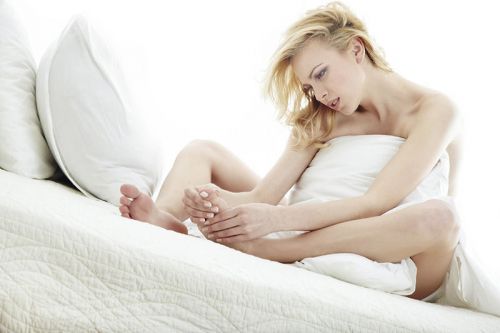
The most common cause of leg cramps during pregnancy is venous insufficiency.
As a rule, convulsions occur at night. In women, in the evening, the upper part of the leg, foot, lower leg swells, and numbness and heaviness are felt in the calf muscles. Such symptoms require careful monitoring by the attending physician, with constant monitoring and comparative characteristics of the changes taking place. If necessary, a decision is made on possible therapeutic treatment, taking into account the severity of the woman's condition and the danger to the child.
Medical therapy
It should be borne in mind that there are no special drugs for the treatment of seizures. All of them are prescribed, in accordance with the established diagnosis, the frequency of seizures and the presence of any chronic diseases in the patient.
The only common cure for seizures are medications that contain a balanced complex of vitamins and minerals. In addition, as an additional remedy, the doctor may recommend taking magnesium and muscle relaxants, which have a relaxing effect on muscle tissue.
The most effective mineral and vitamin complexes against leg cramps include:
- Magne-B 6 , Alphabet;
- Calcium-D 3 Nycomed;
- Alfadol-Ca, Complivit, etc.
- Magnesium preparations that serve to prevent the development of seizures are:
- Natural Calm, Magnerota;
- Diasporal; Magnistad;
- Asparkam, Magnelis V 6 ;
- Solgar with magnesium citrate, etc.
Muscle relaxants include:
- Baclofen, Tolperisone;
- Sirdolud, Mydocalm and others.
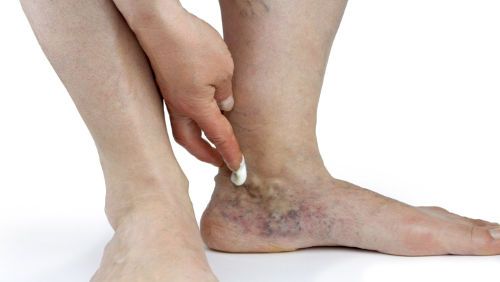
As a local remedy, you can use Troxevasin ointment or gel, Heparin ointment, as well as drugs that contain horse chestnut
Such drugs stop convulsive attacks and pathological symptoms due to the warming and anti-inflammatory effect exerted on the vessels of the lower extremities.
Treatment of seizures with folk remedies
In addition to drug therapy, it is possible to treat a pathological condition with the help of traditional medicine. Thanks to such recipes, you can significantly reduce the frequency of seizures, and in some cases completely get rid of them.
The following recipes are considered the most effective:
- to relieve convulsive contraction, it is necessary to apply slightly warmed honey to the calf area, on top of which a layer of cling film is applied, and then a heater. The holding time of such a compress on the leg is no more than half an hour, after which the remnants of honey are washed off with warm water;
- with cramps against the background of varicose veins, rubbing the legs with apple cider vinegar is recommended, as well as taking apple cider vinegar inside 2 times during the day, after dissolving 2 tbsp. tablespoons of vinegar in 200 ml of slightly warmed water. The general course of treatment is at least 1 month;
- so that the legs do not cramp, it is recommended to mix 1 egg yolk with 1 tbsp. spoon of apple cider vinegar and 1 teaspoon of turpentine. After thorough mixing, this solution is rubbed into the calves at bedtime;
- to prevent the development of seizures, you can rub your feet with mustard powder or freshly squeezed lemon juice;
- celandine juice (1 part) is mixed with 2 parts of vaseline and applied to the legs when a convulsive attack begins, which allows you to stop it at the initial stage.
Despite the sufficient effectiveness and safety of folk recipes, you should consult with your doctor before using them, as there may be cases of individual intolerance to some herbal ingredients.
Urgent care
With the frequent occurrence of cramps in the legs, you need to know what to do in an emergency to get rid of such symptoms:
- it is recommended to pull the toes of the cramped leg towards you, and if it is difficult to reach out, you can use a towel or belt to tighten your fingers;
- in the event that there was nothing at hand that could help, you can stand with your whole foot on your toes, so that the foot bends up as much as possible, then relax and stretch the calf muscle;
- it is necessary to massage the leg muscle starting from the fingertips, towards the knee, as well as pinch and pat the leg.
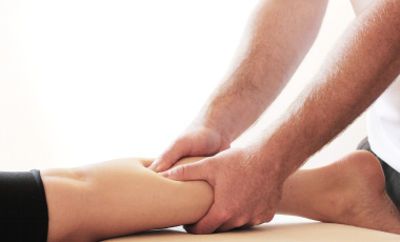
Massage of the calf muscles allows you to quickly get rid of cramps
For some patients, very strong muscle spasms can be relieved by a hot foot bath.
Diet
To date, there is no single product that would provoke the development of a convulsive symptom with a high degree of probability. Nevertheless, the influence of nutrition should not be completely excluded, since it can often lead to leg cramps with obesity and atherosclerosis. Accordingly, a special diet should be drawn up, which as much as possible prevents the development of such a condition.
The diet must meet the following conditions:
- the daily menu should contain the required number of calories to maintain strength, including trace elements and vitamins;
- it is important to ensure that 1/3 of the entire diet is made up of plant products;
- The daily amount of food should be divided into 5-6 equal portions. At the same time, 1-2 servings of food should be porridge, in order to improve digestion;
- it is recommended to have dinner no later than 2 hours before bedtime, while dinner should be as light as possible.
It must be remembered that the tactics of treatment directly depends on the diagnosis of the disease. With frequent convulsions that are not amenable to drug therapy, surgery is sometimes indicated. In addition, the choice of the right shoes, the normalization of physical activity on the legs and the timely treatment of chronic diseases are of no small importance. With an integrated approach to the treatment of the occurrence of cramps in the legs, the prognosis for recovery is favorable.
